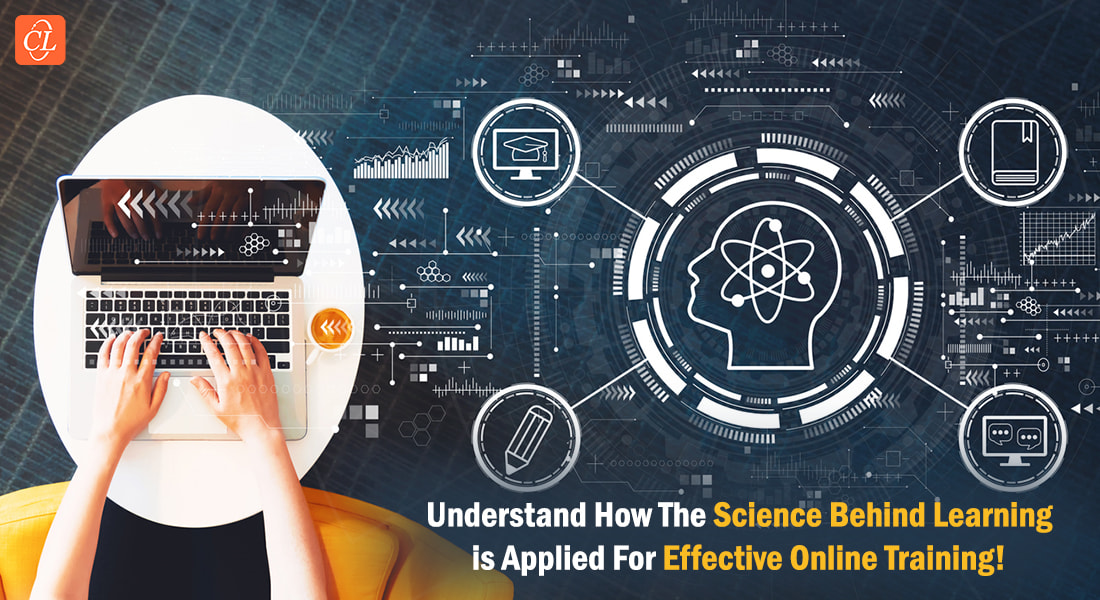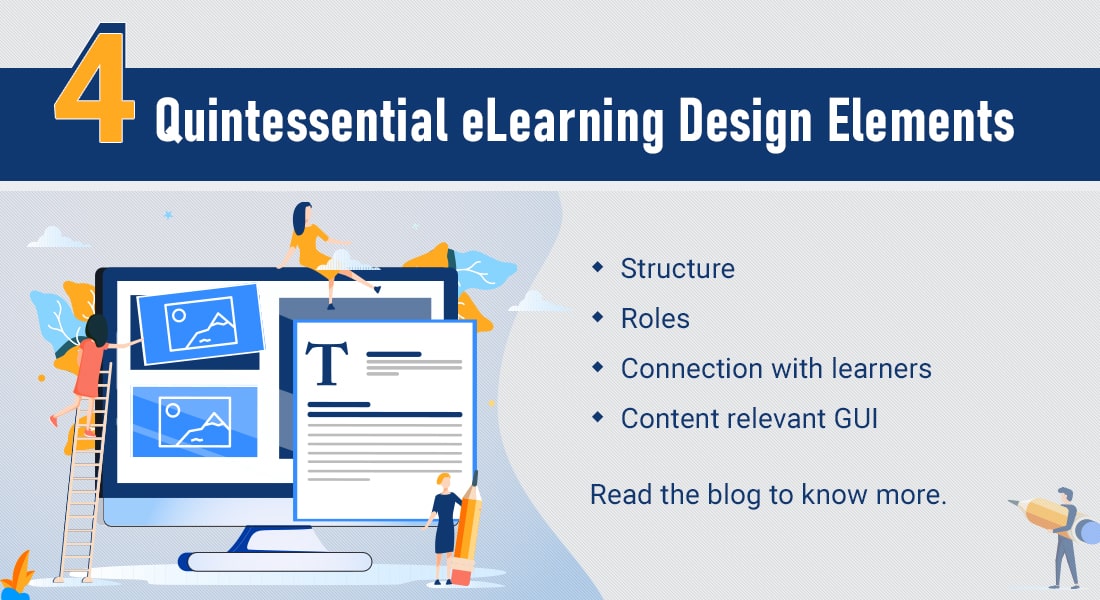How the Science of Learning is Applied to eLearning for Effective Online Training

It is generally accepted that effective learning requires certain cognitive processes: perception, attention, encoding (getting information into memory), consolidation (stabilizing the new memory trace), retrieval (remembering the information on demand), and forgetting (the loss of information over time). For learners to effectively engage with and learn via eLearning, the concept applies the science of learning in every element of the cognitive process, hence supporting the mind’s instructional design.
In this article, we will go over the science of learning itself and how eLearning has adopted these principles for better results. Furthermore, it will also help you understand the crucial elements you need to keep in mind when designing different eLearning courses or using authoring tools for your courses.
Applying Science of Learning to Your eLearning Courses Can be Effective
Here are 5 Key Elements to be Considered:
- Perception
- Encoding
- Consolidation
- Retrieval and
- Forgetting
Understanding How the Science of Learning is Applied to Online Training
For the use of instructional design in eLearning, the primary elements to consider include:
- Perception
- Encoding
- Consolidation
- Retrieval and
- Forgetting
Understanding these five and implementing them properly is key to developing eLearning courses that use the scientific method for improved learning. Let’s take a closer look at all of these.
To ensure that eLearning courses stand out, explore the fundamentals of instructional design!
1. Perception
Perception is the process of taking in information through the senses. In order for learners to perceive online content, they need to be able to see it and hear it clearly. The learner’s ability to pay attention is also important; if they are not paying attention to the content, they will not be able to encode it into memory.
2. Encoding
Encoding is the process of getting information into memory. For information to be encoded, it must be meaningful to the learner. The learner’s prior knowledge and experiences will affect how they encode new information. Information that is encoded using deep processing strategies (such as elaborative rehearsal) is more likely to be remembered than information that is encoded using shallow processing strategies (such as rote rehearsal).
3. Consolidation
Consolidation is the process of stabilizing a new memory trace. This can be done through rehearsal, which involves repeatedly accessing and retrieving the information from memory. The more times the information is retrieved, the stronger the memory trace becomes and the less likely it is to be forgotten.
4. Retrieval
Retrieval is the process of remembering information on demand. In order for information to be retrieved from memory, it must first be encoded and consolidated. The strength of the memory trace and the learner’s ability to retrieve relevant information will affect their performance on tasks that require retrieval.
5. Forgetting
Forgetting is the loss of information over time. Information can be forgotten for a variety of reasons, including interference from other information in memory, decay of the memory trace, and retrieval failure. eLearning designers can reduce the likelihood of forgetting by incorporating activities that encourage retrieval practice and by providing learners with opportunities to review the material.
Learning Science: Simply Watching is Not Enough
It is a common misconception that learners can learn simply by watching a video or listening to a lecture. This was a primary issue in the early phases of eLearning.
In reality, learners need to do more than just passively consume content; they need to actively engage with it in order to encode it into memory and consolidate the new learning. This is the new form of eLearning, where the science of learning has been extensively applied to the industry.
There are a variety of ways that learners can actively engage with content, including answering questions, taking notes, and participating in discussions. eLearning designers and developers should create opportunities for learners to engage with the content throughout the learning experience.
Understanding The Brain to Get a Clearer Picture
In order to understand how to effectively support learners, it is important to understand the science of learning from the brain’s point of view. Learning is a complex process that occurs in the brain and is influenced by a variety of factors, including motivation, prior knowledge, and cognitive abilities.
The brain is made up of billions of neurons, which are interconnected through synapses. When we learn something new, the connections between neurons are strengthened. This process is known as synaptic plasticity.
Synaptic plasticity is believed to be the basis for memory, learning, and unlearning. When we encode new information into memory, the connections between neurons are strengthened. The more times we access and retrieve the information from memory, the stronger the connections become and the more likely we are to remember the information, a.k.a. iteration and reiteration.
Different Types of Memory
There are various types of memory, which can be divided into two broad categories: declarative memory and procedural memory.
- Declarative memories are memories of facts and events (such as knowing that Paris is the capital of France).
- Procedural memories are memories of how to do something (such as knowing how to ride a bike).
Both declarative and procedural memories are encoded in the brain using different mechanisms. The former is encoded in a part of the brain called the hippocampus and the latter are encoded in a part of the brain called the cerebellum.
Attention is the ability to focus on relevant information and ignore distractions. In order for information to be encoded into memory, it must first be attended to.
Then there is the encoding process, where information is translated into a form that can be stored in memory. The type of information that is encoded, and the way in which it is encoded, can have a significant impact on how well it is remembered.
There are three primary types of encoding:
- Visual, the process of encoding information using sight
- Acoustic, the process of encoding information using sound, and
- Semantic, the process of encoding information using meaning.
Once information is encoded, it must be consolidated in order to be stored in long-term memory. Consolidation is the process of transforming newly acquired information into a more durable form. There are two primary types of consolidation: short-term consolidation and long-term consolidation.
eLearning can be delivered in a variety of ways by combining all these elements. Different brains mean different learning styles of your learners, which is why an interactive form of eLearning is known to be rather effective. People get to direct their learning experience based on their own preferences.
Breaking Down Bigger Portions into Smaller Chunks With eLearning
When learning new information, it is often helpful to break down bigger portions into smaller chunks, as this helps the brain form better, stronger pathways quickly and more effectively. eLearning is a great tool for breaking down information into smaller chunks.
eLearning courses are typically divided into modules or sections that cover specific topics. This allows learners to focus on one topic at a time and prevents them from feeling overwhelmed by too much information at once.
It is also important to provide learners with opportunities to practice what they have learned. Practice can help embed the new information into memory and make it more likely to be retrieved when needed.
eLearning provides learners with the opportunity to practice through activities such as interactive quizzes, games-based learning, and simulations – something that regular learning struggles with.
Breaking down also means offering rewards after short intervals. For example, for adults, the science of learning suggests that:
- Adults need to know why they are learning something. They need to see the relevance of the information to their lives or work.
- Adults need to be actively involved in the learning process. They should not be passive learners who just absorb information.
- Adults need to have a say in how they learn. They should be able to choose the delivery method, pace, and level of detail that works best for them.
- Adults need to be able to apply what they have learned. The information should be relevant to their lives or work and allow them to transfer it to real-world situations.
When these principles are taken into account, eLearning can be an effective way to deliver training to adults. This shows how the science of learning has turned eLearning into an effective way to deliver training to adults. The same is true for children, teenagers, and even the elderly.
When designing eLearning courses, it is important to consider the demographic of learners, as it has a major impact on the process itself. Gamification, for example, is better suited for teenagers and children than adults and the elderly.
Bottom Line
I hope if these principles of the science of learning are taken into account, eLearning can be an effective and successful way to deliver training. Want to scale your corporate training to the next level? Get insights on the new trends in the corporate training world. Download this free eBook and grab all that information that you need.




![eLearning for Corporate Training: Story Of How We Helped This Global Agricultural Company [Case Study]](https://blog.commlabindia.com/hubfs/Imported_Blog_Media/eLearning-for-Corporate-Training-We-helped-worlds-leading-Agricultural-Company-Case-Study-min.png)
